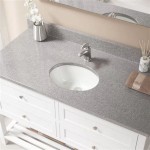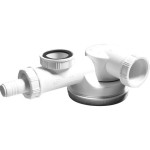Tile Bathroom Wall and Pedestal Sink: A Design and Installation Guide
The integration of tile bathroom walls and pedestal sinks represents a classic and versatile design choice for bathrooms of varying styles and sizes. This combination offers aesthetic appeal, ease of maintenance, and space-saving benefits. Understanding the nuances of selecting the right tiles, installing them effectively, and choosing a compatible pedestal sink is crucial for achieving a successful and enduring bathroom renovation.
This article explores the key considerations involved in designing a bathroom featuring tile walls and a pedestal sink, focusing on tile selection, installation techniques, pedestal sink choices, and practical considerations for a functional and visually pleasing space. The information presented aims to provide a comprehensive understanding of the various elements involved in this type of bathroom design project.
Tile Selection for Bathroom Walls
The selection of tiles for bathroom walls is a fundamental aspect of the design process. Several factors influence this decision, including material, size, color, pattern, and finish. Each of these characteristics contributes to the overall aesthetic and functional properties of the bathroom.
Material: Common tile materials for bathroom walls include ceramic, porcelain, glass, and natural stone. Ceramic tiles are a cost-effective and versatile option, known for their durability and ease of maintenance. Porcelain tiles are denser and more water-resistant than ceramic, making them suitable for moisture-prone environments. Glass tiles offer a sleek and modern look, and they are non-porous, resisting stains and water damage. Natural stone tiles, such as marble or travertine, provide a luxurious and unique aesthetic, but they require more maintenance and sealing to prevent staining and water absorption.
Size: Tile size is another crucial consideration. Larger tiles can create a more seamless look with fewer grout lines, making the bathroom appear more spacious. Smaller tiles, such as mosaics, can add intricate detail and visual interest. The size of the tile should be proportional to the size of the bathroom. For smaller bathrooms, smaller to medium-sized tiles are generally preferred to avoid overwhelming the space. In larger bathrooms, larger tiles can be used effectively to create a more expansive feel.
Color: Color plays a vital role in setting the mood and atmosphere of the bathroom. Lighter colors, such as white, cream, or light gray, can make a small bathroom appear brighter and more open. Darker colors, such as navy blue or charcoal gray, can add drama and sophistication to a larger bathroom. The color of the tiles should complement the other elements in the bathroom, such as the pedestal sink, fixtures, and accessories.
Pattern: Tile patterns can add visual interest and personality to the bathroom. Common patterns include subway tile, herringbone, and geometric designs. The choice of pattern should reflect the overall style of the bathroom. For a classic and timeless look, subway tiles are a popular choice. For a more modern and contemporary look, geometric patterns or large-format tiles can be used. It's also important to note that intricate patterns might require more precise installation and may increase the amount of tile needed due to cuts and waste.
Finish: The finish of the tile affects its appearance and functionality. Glossy tiles reflect light, making the bathroom appear brighter, but they can also be slippery when wet. Matte tiles provide a non-slip surface and a more subdued look. Textured tiles can add visual interest and traction, but they can also be more difficult to clean. The choice of finish should be based on both aesthetic preference and safety considerations.
Installation Techniques for Tile Walls
Proper tile installation is essential for ensuring the longevity and aesthetic appeal of the bathroom walls. This process involves several critical steps, including surface preparation, layout, application of adhesive, tile placement, grouting, and sealing.
Surface Preparation: The wall surface must be clean, dry, and level before tiling. Any existing wallpaper, paint, or loose material should be removed. Imperfections in the wall surface should be repaired with patching compound. A primer should be applied to the wall to improve adhesion and prevent moisture absorption. For wet areas, it's highly recommended to install a waterproof membrane behind the tiles to protect the wall structure from water damage.
Layout: Planning the tile layout is crucial for achieving a visually balanced and aesthetically pleasing result. Start by determining the focal point of the wall and centering the tile pattern around it. Consider the placement of the pedestal sink and any other fixtures or accessories that will be mounted on the wall. Use a level and a measuring tape to ensure that the tiles are aligned properly and that the grout lines are consistent. Dry-fitting the tiles before applying adhesive can help to identify any potential problems and adjust the layout as needed.
Application of Adhesive: Choosing the right adhesive is important for ensuring a strong and durable bond between the tiles and the wall. Use a thin-set mortar that is specifically designed for tile installation in wet areas. Apply the adhesive evenly to the wall using a notched trowel, holding the trowel at a 45-degree angle. The depth of the notches will determine the amount of adhesive that is applied. Work in small sections to prevent the adhesive from drying out before the tiles are placed.
Tile Placement: Carefully place each tile onto the adhesive, pressing firmly to ensure good contact. Use tile spacers to maintain consistent grout lines. Check the alignment of the tiles with a level to ensure that they are straight and plumb. Remove any excess adhesive from the tile surface with a damp sponge. Allow the adhesive to dry completely before proceeding to the next step.
Grouting: Once the adhesive has dried, remove the tile spacers and apply grout to the joints between the tiles. Use a grout float to press the grout into the joints, working in a diagonal direction. Remove any excess grout from the tile surface with a damp sponge. Allow the grout to dry according to the manufacturer's instructions. After the grout has dried, buff the tile surface with a clean cloth to remove any remaining grout residue.
Sealing: Sealing the grout lines is essential for preventing water absorption and staining. Apply a grout sealer to the grout lines using a small brush or applicator. Allow the sealer to dry according to the manufacturer's instructions. Reapply the sealer periodically to maintain its effectiveness.
Pedestal Sink Selection and Installation
Choosing the right pedestal sink involves considering both its aesthetic design and compatibility with the bathroom's dimensions and plumbing. Installation requires careful attention to plumbing connections and ensuring the sink is securely mounted to the floor and wall.
Style and Design: Pedestal sinks are available in a variety of styles, ranging from traditional to modern. Traditional pedestal sinks often feature ornate details and curved lines, while modern pedestal sinks tend to have clean lines and minimalist designs. The style of the pedestal sink should complement the overall design of the bathroom, including the tile walls and other fixtures. Consider the size and shape of the sink basin, as well as the height of the pedestal. The height of the sink should be comfortable for the user.
Size and Dimensions: The size of the pedestal sink should be appropriate for the size of the bathroom. In a small bathroom, a smaller pedestal sink is preferable to avoid overcrowding the space. Measure the available space before selecting a pedestal sink to ensure that it will fit comfortably. Consider the depth of the sink basin and the distance from the sink to the wall. These dimensions will affect the amount of space that is available for movement in the bathroom.
Material and Finish: Pedestal sinks are typically made of vitreous china or porcelain. These materials are durable, easy to clean, and resistant to stains. The finish of the sink should complement the color of the tiles and other fixtures in the bathroom. Common finishes include white, off-white, and black. Some pedestal sinks also feature decorative accents, such as chrome or brushed nickel.
Plumbing Connections: Before installing the pedestal sink, ensure that the plumbing connections are in the correct location. The drain pipe should be centered behind the sink, and the hot and cold water supply lines should be located on either side of the drain pipe. Install shut-off valves on the water supply lines to allow for easy maintenance and repairs. Connect the drain pipe to the sink drain using a P-trap to prevent sewer gases from entering the bathroom.
Mounting and Securing: Pedestal sinks are typically mounted to the floor and wall for stability. Use lag bolts to secure the pedestal to the floor. Attach the sink basin to the wall using mounting brackets. Ensure that the sink is level and plumb before tightening the bolts. Apply caulk around the base of the sink and the mounting brackets to seal any gaps and prevent water damage.
By carefully considering these factors, it is possible to create a tile bathroom wall and pedestal sink combination that enhances both the aesthetic appeal and functionality of the bathroom space. The successful integration of these elements requires careful planning, material selection, and installation techniques.

Gray Glass Brick Tiles With White Pedestal Sink Transitional Bathroom

Pedestal Sink On Marble Maze Floor Tiles Transitional Bathroom

Mediterranean Bathroom Design Boasts Blue Moroccan Style Wall Tiles Surrounding A Pedest Interior Tile

40 Half Bathroom Decor Ideas Priviglaze

29 Pedestal Sink Bathroom Ideas For A Spacious Look

Bathroom Ceramic Tile Walls Pedestal Sinks Design Photos And Ideas Dwell

Pin By Bellalisa On Bathrooms Pedestal Sink Bathroom Backsplash

Bathroom Pedestal Sinks Subway Tile Walls Design Photos And Ideas Dwell

40 Half Bathroom Decor Ideas Priviglaze

36 Stylish And Cool Pedestal Sinks For Your Bathroom Shelterness







